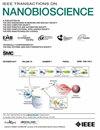基于氧化石墨烯和 SYBR Green I 联合作用的无标记荧光拟合传感器,用于检测黄曲霉毒素 B1。
IF 4.4
4区 生物学
Q1 BIOCHEMICAL RESEARCH METHODS
引用次数: 0
摘要
本文基于氧化石墨烯(GO)和SYBR Green I(SGI)染料的特性,提出了一种通过DNA链反应放大信号的无酶、无标记荧光生物传感器,用于食品安全中黄曲霉毒素B1(AFB1)的检测。首先,在不添加 AFB1 的情况下,系统中的底物包括一条具有长粘性末端的双链 Apt-S,以及两条发夹 H1 和 H2。虽然碱基互补配对可能会因 SGI 染料的插入而发出荧光,但使用具有很强吸附单链部分和淬灭荧光能力的 GO 可以巧妙地减少背景荧光。加入目标 AFB1 会引发 DNA 链间反应,生成大量长双链 DNA H1-H2,从而在 SGI 的作用下产生强烈的荧光信号。更重要的是,在生物实验之前进行了逻辑理论验证和计算机模拟,为生物传感器的实现提供了理论依据。经过分析,该荧光生物传感器在 5-50nM 范围内与 AFB1 浓度呈良好的线性关系,检测限为 0.76nM。同时,它还具有良好的特异性、抗干扰能力和实际应用能力,在食品安全领域具有广阔的应用前景。本文章由计算机程序翻译,如有差异,请以英文原文为准。
A Label Free Fluorescent Aptamer Sensor Based on the Combined Action of Graphene Oxide and SYBR Green I for the Detection of Aflatoxin B1
Here, based on the characteristics of Graphene oxide(GO) and SYBR Green I(SGI) dye, an enzyme-free and label-free fluorescent biosensor with signal amplification through DNA strand reaction is proposed for the detection of Aflatoxin B1(AFB1) in food safety. Firstly, without the addition of AFB1, the substrate in the system includes a double stranded Apt-S with a long sticky end and two hairpins H1 and H2. Although the complementary pairing of bases may exhibit fluorescence due to the insertion of SGI dyes, the use of GO, which is highly capable of adsorbing single stranded parts and quenching fluorescence, cleverly reduces the background fluorescence. Adding the target AFB1 triggers DNA inter chain reactions, generating a large amount of long double stranded DNA H1-H2, thereby generating strong fluorescence signals under the action of SGI. More importantly, logical theory verification and computer simulation were conducted before biological experiments, providing a theoretical basis for the implementation of the biosensor. After analysis, the fluorescence biosensor exhibits a good linear relationship with AFB1 concentration in the range of 5-50nM, with a detection limit of 0.76nM. It also has good specificity, anti-interference ability, and practical application ability, and has broad application prospects in the field of food safety.
求助全文
通过发布文献求助,成功后即可免费获取论文全文。
去求助
来源期刊

IEEE Transactions on NanoBioscience
工程技术-纳米科技
CiteScore
7.00
自引率
5.10%
发文量
197
审稿时长
>12 weeks
期刊介绍:
The IEEE Transactions on NanoBioscience reports on original, innovative and interdisciplinary work on all aspects of molecular systems, cellular systems, and tissues (including molecular electronics). Topics covered in the journal focus on a broad spectrum of aspects, both on foundations and on applications. Specifically, methods and techniques, experimental aspects, design and implementation, instrumentation and laboratory equipment, clinical aspects, hardware and software data acquisition and analysis and computer based modelling are covered (based on traditional or high performance computing - parallel computers or computer networks).
 求助内容:
求助内容: 应助结果提醒方式:
应助结果提醒方式:


